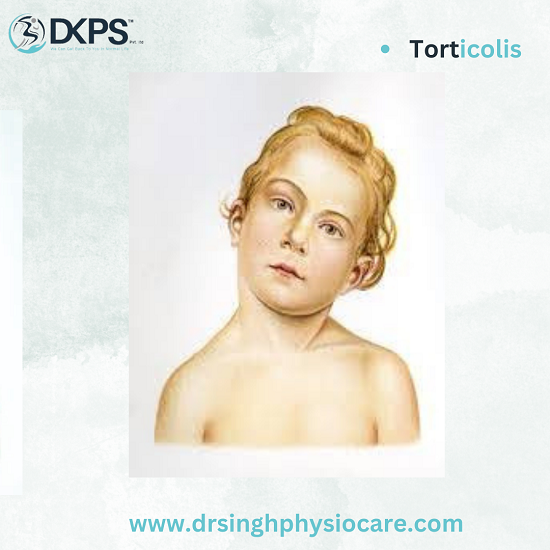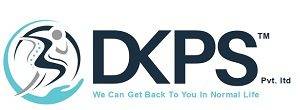- Home
- About Us
- DKPS Dealing
- BLOG
- Delhi NCR
- Delhi
- Physiotherapy at Home Near Me | Physiotherapist in South Delhi
- Best Chiropractor in Delhi
- Physiotherapist in Delhi
- Cupping Therapy in Delhi
- Home Nursing Services in Delhi
- Needle Therapy for Back Pain
- Sports Injury Physiotherapy
- Best Physiotherapist Visit at Home in Rohini Sector 24
- Physiotherapy at Home In Rohini Sector 9 |
- Physiotherapist in Pitampura | Physiotherapy at Home in Pitampura
- Physiotherapy at home in Rohini sector 29
- Physiotherapist in Paschim Vihar
- Physio home visit | Home Visit Physiotherapy |
- Physiotherapist in Saket | Best Physiotherapist in Saket |
- Physiotherapist In Janakpuri | Best Physiotherapist in Janakpuri |
- Best Physiotherapist in Punjabi Bagh | Punjabi Bagh Physiotherapist |
- Best Physiotherapist Service at Home in Dwarka, Delhi
- Best Physiotherapist in Chandigarh at Home Visit
- Faridabad
- Gurugram
- Noida
- Best Physiotherapy Gorakhpur
- Best Physiotherapist in Lucknow | Physiotherapist in Lucknow near me |
- Delhi
- Mumbai
- Delhi NCR
- Department
- Doctors
- Gallery
- Packages
- Contact Us
- Home
- About Us
- DKPS Dealing
- BLOG
- Delhi NCR
- Delhi
- Physiotherapy at Home Near Me | Physiotherapist in South Delhi
- Best Chiropractor in Delhi
- Physiotherapist in Delhi
- Cupping Therapy in Delhi
- Home Nursing Services in Delhi
- Needle Therapy for Back Pain
- Sports Injury Physiotherapy
- Best Physiotherapist Visit at Home in Rohini Sector 24
- Physiotherapy at Home In Rohini Sector 9 |
- Physiotherapist in Pitampura | Physiotherapy at Home in Pitampura
- Physiotherapy at home in Rohini sector 29
- Physiotherapist in Paschim Vihar
- Physio home visit | Home Visit Physiotherapy |
- Physiotherapist in Saket | Best Physiotherapist in Saket |
- Physiotherapist In Janakpuri | Best Physiotherapist in Janakpuri |
- Best Physiotherapist in Punjabi Bagh | Punjabi Bagh Physiotherapist |
- Best Physiotherapist Service at Home in Dwarka, Delhi
- Best Physiotherapist in Chandigarh at Home Visit
- Faridabad
- Gurugram
- Noida
- Best Physiotherapy Gorakhpur
- Best Physiotherapist in Lucknow | Physiotherapist in Lucknow near me |
- Delhi
- Mumbai
- Delhi NCR
- Department
- Doctors
- Gallery
- Packages
- Contact Us
Archives
- Home
- Archives

Torticolis-
What is Torticollis?
Torticollis, also known as a wry neck, is a condition characterized by the involuntary contraction or tightening of neck muscles, resulting in an abnormal tilting or twisting of the head. The term “Torticollis” is derived from the Latin words “tortus” (meaning twisted) and “collum” (meaning neck). This condition can occur at any age and may be temporary or persistent.
Types of Torticollis
1. Congenital Torticollis
Congenital Torticollis is the most common form of the condition and typically manifests shortly after birth. It is often caused by abnormal positioning of the head in the womb or trauma during delivery. In some cases, it may be associated with muscular or skeletal abnormalities.
2. Acquired Torticollis
Acquired Torticollis refers to cases that develop after birth, usually due to underlying factors. This type can be caused by muscle spasms, injuries, infections, or other medical conditions. Acquired Torticollis can affect individuals of any age, from infants to adults.
3. Spasmodic Torticollis (Cervical Dystonia)
Spasmodic Torticollis, or cervical dystonia, is a neurological movement disorder characterized by involuntary muscle contractions in the neck region. These contractions can cause the head to twist or turn in abnormal directions. Spasmodic Torticollis can be a chronic condition and may significantly impact an individual’s quality of life.
Symptoms and Diagnosis
The symptoms of Torticollis can vary depending on the type and severity of the condition. Common signs and symptoms include:
Head tilting to one side
Neck pain or discomfort
Stiffness or tightness in the neck muscles
Limited range of motion in the neck
Shoulder elevation on the affected side
Headaches
Muscle spasms
If you or someone you know is experiencing these symptoms, it is crucial to consult a healthcare professional for a proper diagnosis. The diagnosis of Torticollis typically involves a comprehensive medical history assessment, physical examination, and possibly additional tests such as imaging studies.
Treatment Options
1. Physical Therapy
Physical therapy plays a vital role in managing Torticollis. Skilled physical therapists can provide targeted exercises and stretch to improve neck muscle strength and flexibility. Additionally, they may employ techniques such as manual therapy and postural training to address specific issues related to Torticollis.
2. Medications
In some cases, medications can help alleviate the symptoms associated with Torticollis. Muscle relaxants, pain relievers, and botulinum toxin injections are commonly prescribed to manage muscle spasms, reduce pain, and improve overall comfort.
3. Botulinum Toxin Injections
Botulinum toxin injections, commonly known as Botox, can be an effective treatment option for individuals with spasmodic Torticollis. The injections work by temporarily blocking the nerve signals that cause muscle contractions, providing relief from abnormal neck movements.
4. Surgery
Surgical intervention is generally considered when conservative treatments do not adequately improve the condition or in severe cases of Torticollis. Surgical procedures aim to release or lengthen the affected neck muscles to restore normal head positioning and reduce muscle spasms.
Living with Torticollis
While Torticollis can pose challenges, individuals can lead fulfilling lives with appropriate management strategies and support. Here are some tips for living with Torticollis:
Follow the treatment plan recommended by your healthcare provider.
Engage in regular physical therapy exercises and stretches to maintain neck mobility and strength.
Practice good posture to minimize strain on the neck muscles.
Use supportive devices such as neck braces or collars as advised by your healthcare professional.
Seek emotional support from family, friends, or support groups to cope with any psychological or emotional impact.
Conclusion
In conclusion, Torticollis is a condition characterized by abnormal neck muscle contractions, resulting in head tilting or twisting. It can manifest in different forms, such as congenital Torticollis, acquired Torticollis, or spasmodic Torticollis. Seeking medical attention for a proper diagnosis is crucial to determine the underlying cause and appropriate treatment options. With a combination of physical therapy, medications, and sometimes surgical intervention, individuals with Torticollis can effectively manage their symptoms and improve their quality of life.
Remember, if you or someone you know is experiencing symptoms related to Torticollis, consult a healthcare professional for guidance and support.
How Physiotherapist Can Help in Torticollis?
Physiotherapists play a crucial role in the management and treatment of Torticollis. They have specialized knowledge and skills to address the musculoskeletal aspects of the condition and provide effective interventions. Here are some ways in which physiotherapists can help individuals with Torticollis:
Assessment and Evaluation:
A physiotherapist will perform a thorough assessment to evaluate the specific needs and limitations of the individual with Torticollis. This assessment may include observing posture, assessing a range of motion, identifying muscle imbalances, and evaluating any associated pain or discomfort.
Individualized Treatment Plan:
Based on the assessment findings, the physiotherapist will develop a personalized treatment plan tailored to the individual’s unique needs. The plan may include a combination of manual therapy techniques, exercises, and other interventions.
Manual Therapy:
Physiotherapists may use various manual therapy techniques to address muscle tightness, joint restrictions, and soft tissue imbalances in the neck and surrounding areas. These techniques may include massage, joint mobilizations, and stretching exercises.
Exercise Prescription:
Physiotherapists will prescribe specific exercises to improve strength, flexibility, and range of motion in the neck and upper body. These exercises may target the affected muscles and aim to restore normal alignment and function.
Postural Training:
Correcting and improving posture is an essential aspect of managing Torticollis. Physiotherapists can provide guidance on proper postural alignment and educate individuals on techniques to maintain optimal posture during daily activities.
Education and Self-Management:
Physiotherapists will educate individuals about Torticollis, its causes, and self-management strategies. They may provide advice on ergonomic modifications, relaxation techniques, and strategies to minimize pain and discomfort.
Monitoring and Progression:
Physiotherapists will closely monitor the individual’s progress throughout the treatment process. They will make adjustments to the treatment plan as necessary and ensure that the interventions are effective in addressing the individual’s specific needs.
Collaboration with other Healthcare Professionals:
Physiotherapists may collaborate with other healthcare professionals involved in the individual’s care, such as physicians, occupational therapists, or orthopedic specialists. This interdisciplinary approach ensures comprehensive and coordinated management of Torticollis.
It is important to note that the specific treatment approaches may vary depending on the type and severity of Torticollis, as well as individual factors. Physiotherapists use their expertise to tailor the treatment plan to the unique needs of each individual with Torticollis, aiming to improve their mobility, function, and overall quality of life.
If you or someone you know is experiencing Torticollis, it is recommended to consult with a qualified physiotherapist for a comprehensive assessment and appropriate treatment.
